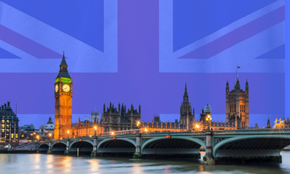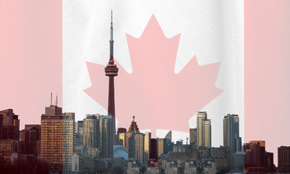Ivy League Universities vs. Public Universities in the USA
Which Is Better: Ivy League or Public Universities?
Ivy League Universities vs. Public Universities in the USA
This Blog Content:
- Definition of Ivy League Universities
- Public Universities What Are They?
- Important Distinctions Between Public and Ivy League Universities
- Ivy League and Public University Similarities
- Which Is Suitable for You?
- Conclusion
Some of the most prestigious colleges in the world are located in the United States, drawing students from all over the world. These include both public and Ivy League universities, each of which has special benefits and experiences to offer. Although both kinds of institutions offer outstanding education, their histories, reputations, accessibility, and possibilities are different. Prospective students need to comprehend these differences to make well-informed judgments regarding their educational courses.
#Definition of Ivy League Universities:
Eight private institutions in the northeastern United States make up the Ivy League, which is renowned for its illustrious history, selective admissions, and academic prowess. Ivy League colleges were founded mostly during the colonial era and were first connected to a sports conference. Today, they are known for their rigorous academic programs and prestigious education. They are well known for creating powerful alumni, innovative research, and extensive worldwide connections.
The following are the institutions:
|
University Name |
Location |
Key Features |
|
Harvard University |
Massachusetts |
Oldest Ivy League university; renowned for law, business, and medicine programs. |
|
Yale University |
Connecticut |
Known for arts, humanities, and its distinguished law school. |
|
Princeton University |
New Jersey |
Focuses on undergraduate education and strong programs in mathematics and sciences. |
|
New York |
Located in New York City; excels in journalism, business, and international affairs. |
|
|
University of Pennsylvania |
Pennsylvania |
Famous for its Wharton School of Business; strong interdisciplinary focus. |
|
Dartmouth College |
New Hampshire |
Offers a close-knit, liberal arts-focused environment; with a strong emphasis on undergraduate teaching. |
|
Brown University |
Rhode Island |
Known for its Open Curriculum, allowing students to tailor their education. |
|
Cornell University |
New York |
Offers diverse programs, including engineering, agriculture, and hotel management. |
#Public Universities: What Are They?
State governments provide revenue and oversight for public institutions, sometimes referred to as state universities. The purpose of these institutions is to make education accessible to both in-state and out-of-state students. Public universities offer a wide range of undergraduate, graduate, and doctoral programs and range in size from large campuses with tens of thousands of students to smaller organizations. Among the best public universities in the United States are:
|
University Name |
Location |
Key Features |
|
California |
Renowned for STEM programs, particularly engineering and computer science; top-tier research facilities. |
|
|
Michigan |
Known for business, engineering, and medicine; strong athletic tradition and vibrant campus life. |
|
|
University of Virginia (UVA) |
Virginia |
Offers a historic campus; excels in law, business, and liberal arts education. |
|
University of North Carolina at Chapel Hill (UNC) |
North Carolina |
Distinguished in public health, business, and journalism; known for its affordability for in-state students. |
|
University of Texas at Austin |
Texas |
Known for engineering, business, and energy research; large, diverse student body with a dynamic campus. |
#Important Distinctions Between Public and Ivy League Universities:
-
Admissions Selectivity:
-
Ivy League: There is fierce competition for admission to Ivy League universities. In recent years, universities like Harvard and Princeton have admitted less than 5% of applications, indicating that acceptance rates frequently fall below 10%. Academic performance, standardized test scores, extracurricular accomplishments, essays, and recommendation letters are all taken into account while making admissions selections.
-
Public Universities: The admissions process for public universities is more expensive. Even while flagship universities like the University of Michigan and UC Berkeley have strict admissions requirements, they often accept a larger proportion of applicants, particularly in-state students who are eligible for preferential admissions.
2. Cost and Convenience of Education:
-
Ivy League: Ivy League schools are privately owned schools with annual tuition fees that frequently surpass $60,000. They do, however, provide substantial financial help packages that frequently cover all of the proven need for funds. The cost of an Ivy League education can be surprisingly relatively small for students from low-income families.
-
Public Universities: Public universities often offer reduced tuition rates, especially for in-state students. However, out-of-state tuition might be on par with or more expensive than Ivy League tuition. Scholarships and financial aid are available at public universities, but they are often less comprehensive than those offered by Ivy League colleges.
3. Resources and Funding:
-
Ivy League: These elite colleges may offer unmatched resources, such as cutting-edge facilities, research opportunities, and access to esteemed staff, thanks to their substantial endowments—Harvard alone surpasses $50 billion. Small class sizes and individualized attention are beneficial to students.
-
Public colleges: Compared to Ivy League colleges, public universities may have fewer resources because they are dependent on federal grants, state money, and tuition income. Nonetheless, big public institutions frequently have state-of-the-art research facilities and excel in specific disciplines like business, engineering, and medicine.
4. Campus Size and Student Population:
-
Ivy League: Both undergraduate and graduate enrollment at Ivy League universities is smaller, with enrollments ranging from 4,000 to 25,000. This promotes individualized connections with professors and a tight-knit academic community.
-
Public Universities: With enrollments frequently surpassing 30,000, public universities typically have higher student populations. Although this diversity makes the campus lively, it may also lead to bigger class numbers and less individualized attention.
5. Academic Prestige and Credibility:
-
Ivy League schools are renowned for their emphasis on the humanities, social sciences, and theoretical research, as well as their liberal arts curriculum. They are linked to exclusivity and prestige and usually score high in international university rankings.
-
Public institutions: Vocational and technical degrees are among the many programs offered by public institutions. With a strong emphasis on applied and practical research, many public universities are leaders in the STEM (science, technology, engineering, and mathematics) fields.
6. Ivy League:
-
Student Networks and Career Possibilities: Ivy League graduates frequently occupy top roles in academia, business, and politics, making their alumni networks extremely powerful. These networks offer substantial benefits in terms of mentorship and job placement.
-
Public institutions: Public institutions also have outstanding alumni, especially in specialized fields like engineering (from the University of Illinois) and technology (from the University of California system). The networks are bigger and more varied, but they might not be as exclusive.
#Ivy League and Public University Similarities:
Although they differ greatly, Ivy League and public colleges have several things in common:
-
High-quality education: Both kinds of establishments provide top-notch academic programs, renowned instructors, and access to cutting-edge research opportunities.
-
International Recognition: Prominent public universities with Ivy League-caliber reputations include UC Berkeley, UCLA, and the University of Michigan.
-
Extracurricular Activities: To enhance the student experience, public and Ivy League colleges provide a variety of organizations, extracurricular activities, and athletic programs.
-
Academic and Cultural Diversity: Both draw students from a range of socioeconomic, ethnic, and cultural backgrounds, creating a global learning environment.
#Which Is Suitable for You?
Individual preferences, professional aspirations, and financial situation all play a role in choosing between public and Ivy League universities. The following factors will assist you in making the best decision:
-
Academic Objectives: An Ivy League university would be a better fit if your area of interest is business, law, or the liberal arts. If you're interested in engineering, technology, or applied sciences, many public colleges excel in these areas.
-
Finances: In general, public universities are less expensive, particularly for students who attend in-state institutions. However, for students with proven need, Ivy League institutions may be competitive due to their financial help.
-
Class Size and Learning Environment: An Ivy League university might be more enticing to you if you value smaller class sizes and a tight-knit academic community. Public colleges provide a dynamic and varied experience because of their larger campuses and student bodies.
-
Opportunities for Networking: Take into account the size and breadth of alumni networks in the field you choose to pursue. Although both kinds of universities have strong networks, Ivy League colleges frequently offer a competitive advantage in terms of exclusivity.
Get started to take guidance from an expert counselor for FREE
#End note:
In the end, your academic interests, financial concerns, and personal goals will determine whether you choose an Ivy League school or a public one. Both provide excellent professional pathways, top-notch education, and amazing opportunities. You may make an informed decision that supports your objectives by being aware of the main distinctions and assessing your priorities. Both options can significantly alter your future, whether you decide on the many chances of a public university or the venerable tradition of the Ivy League.
Read More:
- Why Should You Study In The USA?
- Why Should You Study In The UK?
- Why Should You Study In The Canada?
- Why Should You Study In The New Zealand?
- Why Should You Study In The Australia?
- Why Should You Study In The France?
- Why Should You Study In Ireland?
- Why Should You Study In The Netherlands?
- Why Should You Study In The Germany?
- Why Should You Study In The Singapore?
- Why Should You Study In Sweden?
- Why Should You Study In The Switzerland?
- Why Should You Study In Finland?
- Why Should You Study In Japan?
- Why Should You Study In Denmark?
Ask Your Question
Related Articles

Is a master’s degree from the UK worth studying?
Which is better US or UK for Masters?
Study Masters / MS in US & Canada - Post graduation in USA/Canada - MS in US/Canada Consultants
Which is better US or Canada for masters?
Study Public Health & Healthcare Courses in USA
Postgraduate Public Health courses in United States
Masters in Finance HR and other management programs in USA and Europe
Master's degrees in Human Resource Management in Europe
Study PhD Programs in USA / Canada / UK / Europe
Is it better to do PhD in USA or Europe?
Study MBA in North America & UK
MBA in UK or MBA in USA
California State University, Long Beach MS/Masters - Application - Admission - Deadlines for FALL/SPRING 2024
What is the application deadline for Cal State Long Beach?
University of Alabama at Birmingham - MS/Masters - Application - Admission - Deadlines - FALL/SPRING 2019
What is the application deadline for UAB?
University of South Alabama - MS/Masters - Application - Admission - Deadlines - FALL/Spring 2024
What is the application deadline for University of South Alabama?
Bachelors in USA - Eligibility, Cost, Exams, Documents, Requirements
Study Guide to USA for International Students:
Tips for International Students Traveling to USA
What do international students need to travel in the US?
Study in USA Consultant Pune - Masters, MS, MBA & PhD in USA Admission Guidance & Counseling
What are the requirements to study in USA for MS?
How to evaluate my profile for ms in USA?
Profile Evaluation for MS in US - USA
Pune Consultants - Study in USA, UK, Canada, Japan, Germany, Australia, Sweden, Europe, France, Ireland, New Zealand Admission
Which consultant is best for abroad study?
Will be studying MS in Industrial Management in USA - University of Central Missouri - UCMO - Akshay Shinde
What is MS in Industrial Management?
Pursuing MS in Computer Science in USA - University of Texas Arlington - Rohit Singh
Is USA good for MS in computer science?
Bhavna Mansinghka - Going USA for the Master in Management Science & Quatitative Methods
What can you do with a masters in quantitative methods?
MS in USA Fees, Cost, Universities, Fall/Spring 2024/ 2025
When should I start applying for Spring 2023?
Rohit Kamble - Going USA for the Ms in Industrial Engineering
What is MS in industrial engineering?
Soham Chaudhari - Going USA for the MS in Management Science
Is going to USA for MS worth it?
Jayesh Shahane - Going USA for the MS in Mechanical Engineering
MS in Mechanical Engineering in USA
Aishwarya Mane - Going USA for the MS in Information System
Why USA for masters in information systems?
Study in USA student for MS in Industrial Management - Akshay Shinde
Best Master's Degrees in Industrial Management
Kshitij Sutar - Going for MS in Computer Science in USA - Arizona State University
Is MS in CS in USA hard?
Swati Mrumu - Going USA for the MS in Information System
Why USA for masters in information systems?
Shafee Bhure - Going USA for the Master of Education
What are the requirements for master's degree in USA?
Atharva Kousadikar - Pursuing MPS in Enterprise Intelligence in USA
Master of Professional Studies in Applied Machine Intelligence
Rohit Kamble - Going USA for the Ms in Industrial Engineering
Which University is best for MS in industrial engineering in USA?
How is Studying in USA different from Study in India
Why studying in US is better than India?
Food Options for Indian Students In The USA
Is Indian food available in USA?
What are the advantages & disadvantages of studying USA
What are the benefits of studying in USA?
I want to study in USA but i don't have money ? What is the Cost of Studying in USA
Can I study in USA without money?
Top Universities in Mexico Cities, Rankings, Fees
How much does university in Mexico cost?
Is There Any Age Limit To Study In USA?
Can I study in USA at the age of 40?
Study Bachelors in USA / Canada
Is US bachelors degree valid in Canada?
Top 5 reasons why Grad-Dreams is best consultancy for USA
abroad education consultants mumbai
Types of Management Degree in USA
How many types of management degrees are there?
Study MBA in Finance from USA
How can I get MBA in finance in USA?
Study MBA in Accounting in the USA
Which countries are the best to study MBA in Accounting?
Study MBA in International Business - USA
What is MBA in international business in USA?
Study MBA in Entrepreneurship in USA
Which MBA is best for entrepreneurship?
Study MBA in Marketing in the USA
Which MBA course is best in USA?
MBBS in USA: Colleges, Fees, Eligibility - MBBS Abroad Consultants
How many years is MBBS in USA?
MS Engineering Management In The USA
Is engineering management a good course in USA?
MS in Electrical Engineering in the USA
Which university is best for MS in Electrical Engineering in USA?
MS in Business Analytics in the USA
Which university is best for MS in Business Analytics in USA?
Study Masters in Nursing in the USA
Is GRE required for Masters in Nursing in USA?
MBA in Business Management USA
Which MBA is best in USA?
Study MS in Public Health in USA
Is public health a good career in USA?
MBA in General Management from USA
What is general management program in MBA?
MS in USA for Indian Students - : Universities, Fees, Eligibility, Scholarships
How can I get full scholarship for MS in US for Indian students?
Data Analytics Degree: Study in USA, UK and Canada
Which country is best to study data analytics?
Top US Universities without Application Fee
Universities in USA Without Application Fee
University of Aberdeen: Study Overview
Is University of Aberdeen a good University?
HUBERT H. HUMPHREY FELLOWSHIP PROGRAM
How do I get Hubert Humphrey Fellowship Program?
STANFORD RELIANCE DHIRUBHAI FELLOWSHIP PROGRAM
How can I get scholarship for MBA in Stanford for Indian students?
American University Emerging Global Leader Scholarship
Will You Be Our Next AU Emerging Global Leader Scholar?
Top Cosmetology Schools in the United States
What are the top cosmetology schools in the US?
FULLBRIGHT- NEHRU MASTER'S FELLOWSHIP
How can I get Fulbright Nehru fellowship?
Study Robotics in the USA: Courses & Careers
Does robotics have scope in USA ?
How to Get a Cornell University Tata Scholarship
What does Tata Cornell scholarship cover?
PROFILE EVALUATION FOR MS IN USA
What is profile evaluation?
Guide to US Scholarships for International Students
How can an international student get a full scholarship in USA?
MS in Data Science in the US: Your Guide
Is MS in data science in USA worth it?
Earn your free access to Harvard through these scholarships| Study Abroad
Can you get a free scholarship to Harvard?
MS IN MECHANICAL ENGINEERING IN THE US 2024-2025
Which MS course is best in USA for mechanical engineering?
MASTERS IN MANAGEMENT IN THE US
Is MiM available in USA?
Duolingo Accepted Universities In The US
Which university accepts Duolingo?
Bachelor Of Computer Science In The US
Top Universities Bachelor of Computer Science in the USA
MASTERS IN PROJECT MANAGEMENT IN THE US
Which country is best for masters in project management?
Masters in Biomedical Engineering in USA
Master of Engineering in Bioengineering | Bioengineering
Masters in Electrical Engineering in USA
Masters in Electrical Engineering in USA: Universities & Fees
Masters in Aerospace Engineering in USA
Masters in Aerospace Engineering in USA: Universities & Fees
Masters in Environmental Engineering in USA
Master's degrees in Environmental Engineering in United States
Masters In Marine Engineering USA
MS in Naval Architecture & Marine Engineering in USA
Masters in Energy and Power Engineering in USA
Which country is best for Energy Engineering?
Study Masters in Electronics in the USA
Which country is best for masters in electronics?
Masters in Civil Engineering in USA
MS in Civil Engineering in USA: Top Colleges, Eligibility, Fees
Masters in Chemical Engineering in USA
Best Chemical Engineering Programs - US News Rankings
Masters in Mechatronics in the USA
Which country is best for MS in mechatronics?
Masters in Automotive Engineering in USA
Masters (MS) in Automotive Engineering in USA
Masters In Business Analytics In The US
MS in Business Analytics in USA: Top Colleges, Fees
Masters In Cybersecurity In The US
Is MS in Cyber security worth IT in USA?
Ranking Norwich University Of The Arts in the Global World
NUA ranked by The Rookies in World's Top 50 Creative Schools
How Plymouth Marjon University Ranked 101st in the Times Good University Guide 2024
Is Marjon a good University?
Introducing Nottingham Trent University and its World Ranking
Nottingham Trent University - Rankings
University of Bolton is ranked 30th in the Times University Guide 2024
University of Bolton named best in the North West for teaching
Masters In Architecture In The US
Masters in Architecture in USA: Top Colleges, Eligibility, Costs
What are the advantages & disadvantages of studying USA
What are the benefits of studying in USA?
Masters In Digital Marketing In The US
Masters in Digital Marketing in USA: Top Colleges
Masters In Information Systems In The US
What is MS Information Systems in USA?
Masters In International Business In The US
Is it worth doing masters in international business?
Ms in Artificial Intelligence in The US
MS in Artificial Intelligence in USA: Top Colleges, Admissions
Masters In Economics In The US
Masters in Economics in USA: Top Colleges, Admissions
MS in Computer Science in The US
MS in Computer Science in USA : Universities, Fees & Eligibility
MS in Data Analytics in The US
MS in Data Analytics in USA: Top Colleges, Eligibility, Costs
MS in Supply Chain Management in The US
Which country is best for MS in Supply Chain Management?
MS in Finance in the US: What You Should Know
Masters in Finance in US: Top Colleges, Fees, Funding, Jobs
Master's Degrees in Sustainable Energy in USA
Masters in Renewable Energy in USA
Mining, Oil and Gas Master's Degrees in USA
What is the best Master degree for petroleum engineering?
Global Rank of Leeds Trinity University
What rank is Leeds university in the world?
Masters in Social Work in The US
Master of Social Work (MSW) in USA: Course Guide
Masters in Management in The US
Is MiM available in USA?
Study Masters in Cyber Security in The USA
Is MS in cyber security worth it in USA?
Masters in Construction Management in The US
Construction Management courses in United States
Why is The USA Preferred Study Destination For International Students ?
Why USA is best for international students?
Masters In International Business In The US
Is it worth doing masters in international business?
Masters In Nursing In US : 2024/2025
Which is the #1 nursing school in the US?
Ms In Artificial Intelligence In The US
Which country is best for MS in artificial intelligence?
Masters in Industrial Engineering in The US
Which University is best for MS in industrial engineering in USA?
Masters In Health Administration In The US
How can I get admission in MHA in USA?
Masters in Education in the USA
Best Master's Degrees in Education in USA
Masters in Digital Marketing in The US
Is Masters in digital marketing good?
Masters In Actuarial Science In The US
Is Masters in Actuarial Science worth it?
Best Cities In The US for Students
What is the best state to live in USA as a student?
Which Are The Best Destinations To Study In The USA?
Which is the best state in USA for international students?
Highest Paying Jobs In The USA
Highest Paid Recruiters | Highest Paying Cities | Highest Paying University | Top Salary After STEM
All About Work Visa In The USA
Work Visa in The USA | Work While You Study
22 New STEM Subjects Introduced by The US, 20M International Students Expected to Enroll by 2029.
Grad Dreams has some exciting news for the students who wish to Study Abroad in The United States of America.
Salary Of A Data Scientist In US
This article details every point of pay for a data scientist in the United States.
Study in the USA with PTE: A Guide to Accepted Universities and Visa Requirements
What is the minimum PTE score for USA?
Study In The USA
Study In The USA
Why study STEM courses in USA?
What are the advantages of STEM courses in USA for international students?
Why USA is best for education for international students?
Understanding the US Higher Education System for International STEM Students
Top 5 Challenges Faced by International Students in STEM Programs in the USA
What challenges do you face as an international student?
How to Get Into a Business School in the US for an MBA?
Is it good to pursue MBA from USA?
What are the benefits of STEM courses in USA for international students?
How can we improve STEM education in the US?
5 Ways to Overcome Language Barriers as an International Student
Tips for International Students on Overcoming Language Barriers
Indian Students Top the Charts: 1 in 5 Student Visas Granted by the US
Learn the secrets to getting a student visa to the US and the best universities to attend.
MS in Computer Science at ASU | Apply for 2024 Intake | Online, Full-Time, and Part-Time Options | Research-Focused and Industry-Driven
What Are the Requirements to Apply for the MS in Computer Science Program at ASU?
How the US Education System Can Improve for International STEM Students
The Pros and Cons of the US Education System for International STEM Students
Can International Students Get Full Scholarships in the USA? Here's How
How to apply for STEM scholarship?
Navigating the IELTS Maze: Uncover the Essential Scores for Studying in the USA in 2024
What is the IELTS score required for USA 2024?
How to Overcome the Challenges of Being an International Student in the US
What is the struggle of an international student in the US?
Tips for International STEM Students on How to Succeed in American Classes
How will you manage the cultural and educational differences in the usa?
The Benefits of Pursuing an MS in Data Science at USC
How long is Masters in Data Science at University of Southern California?
Top 10 MBA Colleges in the USA for Indian Students: Get Ahead in Your Career
Is MBA in USA good for Indian students?
Top 5 STEM Universities in the USA for International Students
List of STEM universities in USA
What are the advantages of STEM courses in USA for international students?
Importance of STEM Education
Breaking Stereotypes: International Students Are Excelling in STEM
What is STEM stereotype?
MS in Computer Science at University of North Texas | Apply for 2024 Intake | Top-Ranked Computer Science Program
5 reasons why you should apply for MS in Computer Science at University of North Texas in 2024
Study MSCS in Carnegie Mellon University: Everything You Need to Know.
What is special about Carnegie Mellon computer science?
How to Get an Internship in the U.S. as an International Student: A Step-by-Step Guide
Can Indian students get internship in USA?
MS in USA: How to Increase Your Admit Eligibility
Discover the factors that affect your admit eligibility to MS programs in the US.
Master's Studies: Career Services and Skill Enhancement for Science, Technology, and Management Success
Elevate Your Future: Master's Studies Strategies for Career Growth
Job Opportunities In USA For International Students
How much can international student earn in USA?
Everything About the May Intake in USA 2025
Benefits of Choosing the May Intake in USA 2024
Fall 2024 USA Intake: Deadlines & Requirements
September/Fall Intake in USA for 2024-25
Profile Requirements of Students Applying for Master's in the USA
Standardized Test Scores to Boost your MS in USA Application
Why The USA Remains A Powerhouse In Tech Education?
A Culture of Entrepreneurship: How the US Fosters the Next Generation of Tech Leaders
Can A Commerce Grad In India Study Business Analytics In The USA?
Is a US MS in Business Analytics Right for You? pen_spark
USA Universities Without Application Fees 2025
Exploring USA Universities in 2024: A Guide to Institutions Without Application Fees
MBA Specializations in the USA: Charting Your Course to Success
MBA Specializations in the USA: Charting Your Course to Success
Networking Tips for MBA Students in the USA
Build Your Bridge to Success - Connect, Learn, Land Your Dream Job
Diversity & Inclusion for International Students in the USA
Experience a World of Cultures: How International Students Thrive in the US pen_spark
Thriving in MBA Programs: Student Wellness Guide
MBA Programs: Thrive While You Work - A Student's Wellness Guide
Why Cultural Exchange Boosts Your US MBA Experience
Stand Out in a Crowded Field: How Cultural Exchange Boosts Your US MBA Application
MBA Elective Choices for Success in the US
Mastering the MBA Elective Maze: Crack the Code to Success in the USA
MBA Alumni Networks: Unlocking Career Opportunities
Unlocking the Alumni Advantage: US MBA Network Power
US Scholarships & Financial Aid Tips
Unlocking the American Dream: How to Win Scholarships and Financial Aid for US Study
Future of STEM Education: Innovations and Challenges in the U.S.
Preparing the Next Generation for a Tech-Driven World
H-1B Visa Rule Changes Explained
Everything You Need to Know Before the July 8th H-1B Changes
10 Universities In The US With The Best Campuses In 2025
Stunning Campuses That Will Wow You: Top 10 US Universities for 2025 pen_spark
Scope For Research (Ph.D) In Mathematics In The USA
Top US Universities Offering Ph.D. Programs in Mathematics
12 Reasons To Study Arts & Humanities Programs In The USA
Why Study Arts & Humanities in the USA: Top Benefits Explained
Top 10 Reasons to Study in the USA for Success
The American Education Advantage: A Pathway to Global Success
Why Study in the USA? 10 Key Benefits Explained
Top Reasons to Choose the USA for Higher Education
Top 10 Culinary Schools In The USA
Where to Study Culinary Arts in the USA: Top Institutions Ranked
How To Study A Master’s In GIS In The USA?
Top Universities Offering Master’s in GIS Programs in the USA
How To Study A Master’s In Gastronomy In the USA?
Why Choose the USA for Your Master’s in Gastronomy?
Ivy League Universities vs. Public Universities in the USA
Which Is Better: Ivy League or Public Universities?
USA Study Abroad Programs for College Students
How to Apply for a Study Abroad Program in the USA
Construction Design & Civil Engineering In The USA
Why Study Construction Design in the USA? Key Benefits and Advantages

Evaluate your profile for Bachelors, Masters & PhD Programs, to Study Abroad.
Take the First Step Towards Your Global FutureOur Happy Students Studying Abroad
They achieved their dream successfully. It is time to change your story now!






